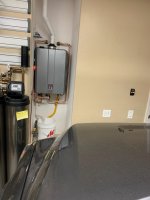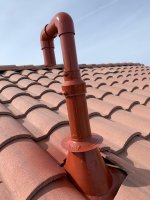Turbo1Ton
Gold Supporter
- Dec 26, 2019
- 1,995
- Pool Size
- 14500
- Surface
- Plaster
- Chlorine
- Salt Water Generator
- SWG Type
- Pentair Intellichlor IC-40
I didn't go back and read through all of this, but I will say I have had a Noritz tankless installed since late 2016. I installed a whole house filter/softener, along with sediment filters at the same time. With the exception of a thermal fuse blowing a year and a half ago I have had no issues. I do flush it almost yearly, every time I change my sediment filter elements. The only issue I did have with it was that during the Arctic Freeze event in February 2021, I had issues with it functioning, which I am 100% certain was due to the outside temperatures. I got several fault codes, replaced the corresponding parts, and it didn't correct it. Once the temps warmed up into the 10's and teens, I had no issues with it, even after installing all of the original parts back into it.
Good news is I shouldn't need to buy any more parts for it, as I have a gas manifold, a control board, thermal fuse, and ignition detection rod.
I do not have any issues with a single point of use not flowing enough for the water heater to function. It does take a good long while first thing in the morning to get hot water in my kitchen, which is about 60' or so from the water heater.
--Jeff
Good news is I shouldn't need to buy any more parts for it, as I have a gas manifold, a control board, thermal fuse, and ignition detection rod.
I do not have any issues with a single point of use not flowing enough for the water heater to function. It does take a good long while first thing in the morning to get hot water in my kitchen, which is about 60' or so from the water heater.
--Jeff



